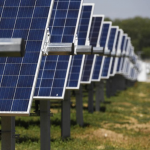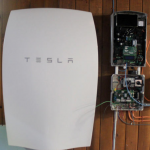When joining a solar garden, location is key
To lower your energy losses
stick close to transmission lines.
 A new study published in the Proceedings of the National Academy of Sciences assessed the siting locations of 161 solar energy facilities in California. Researchers found that a majority of the solar sites were located in natural shrub and scrublands and less than 15% in developed areas.
A new study published in the Proceedings of the National Academy of Sciences assessed the siting locations of 161 solar energy facilities in California. Researchers found that a majority of the solar sites were located in natural shrub and scrublands and less than 15% in developed areas.
Why should this matter to you? If your solar site is outside areas where people live, it may not be so cost-effective. The farther energy has to travel, the greater the energy losses (energy lost = reduced electricity credited to your account). And these new transmission corridors cost more to build, which raises your startup solar costs as well. Sourcing energy from an urban parking lot covered with solar panels is one way to stick closer to transmission lines and reduce energy losses. One solar carport installation at Rutgers University in New Brunswick, NJ produces 8 megawatts of power, or enough energy to power 1,000 homes!
If you are considering making the switch to a solar garden, choose an installation in a dead-space area in your town, such as over a landfill, parking lot, or on a rooftop to help lower your transmission losses.



